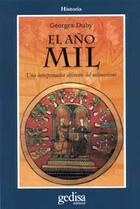A society terrified by the imminence of the end of the world: this image of the Thousand remained alive for many centuries and even persists in the present. As an antidote to unconscious superstitions, the present moment is more than conducive to analyzing the mentality of the end of the first millennium.
With the triumphs of humanism appear in the fifteenth century the earliest descriptions of the terrors of the Thousand Year, reflecting the Renaissance contempt for that barbarism, opposed to idealized classical antiquity.
This image is due in part to the poor consistency of historical testimonies. For a more accurate picture, Georges Duby expands the field of observation, studying the strip of something more than half a century that surrounds the Thousand Year.
Europe at that time was coming out of a deep depression. However, for the generation that preceded the ...read more







